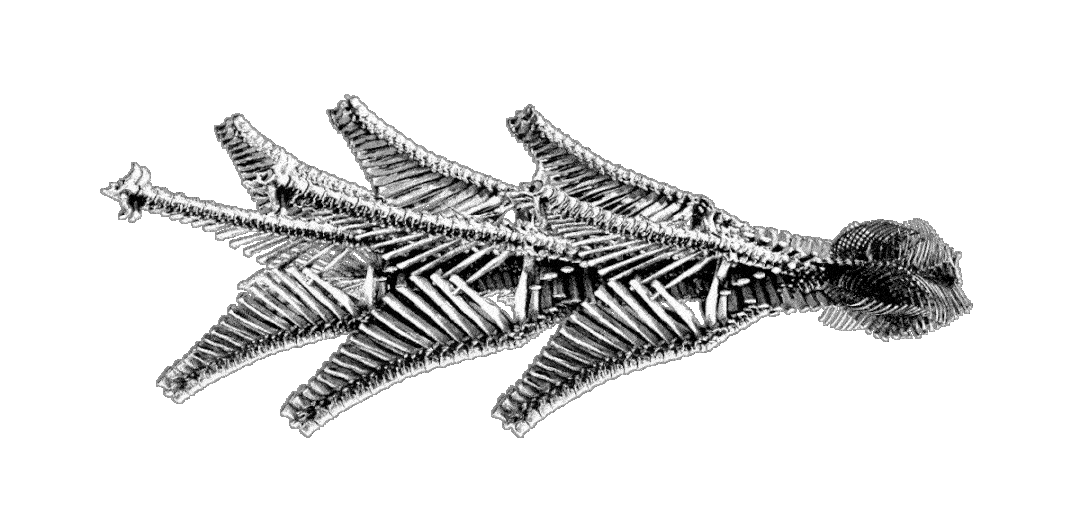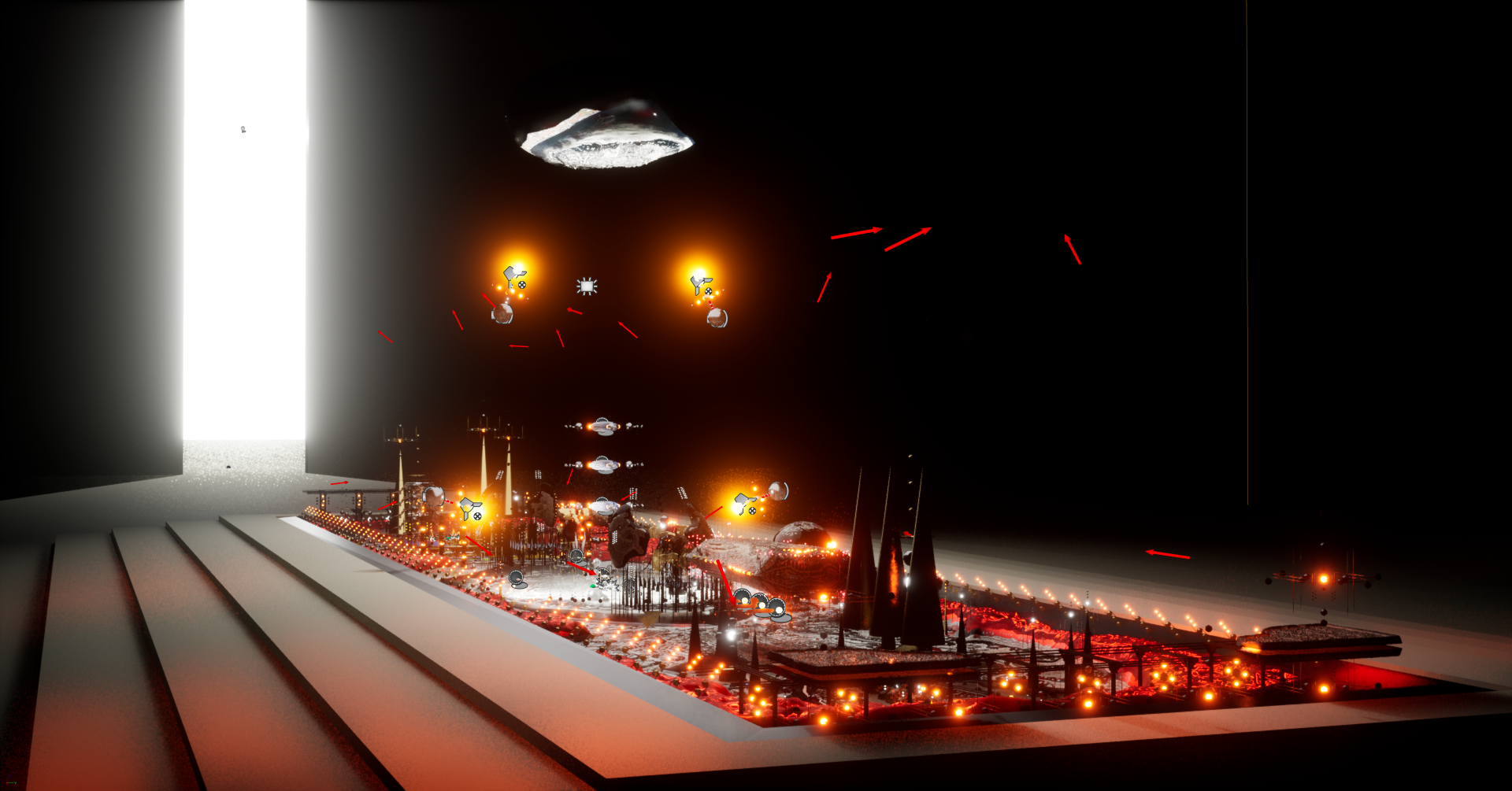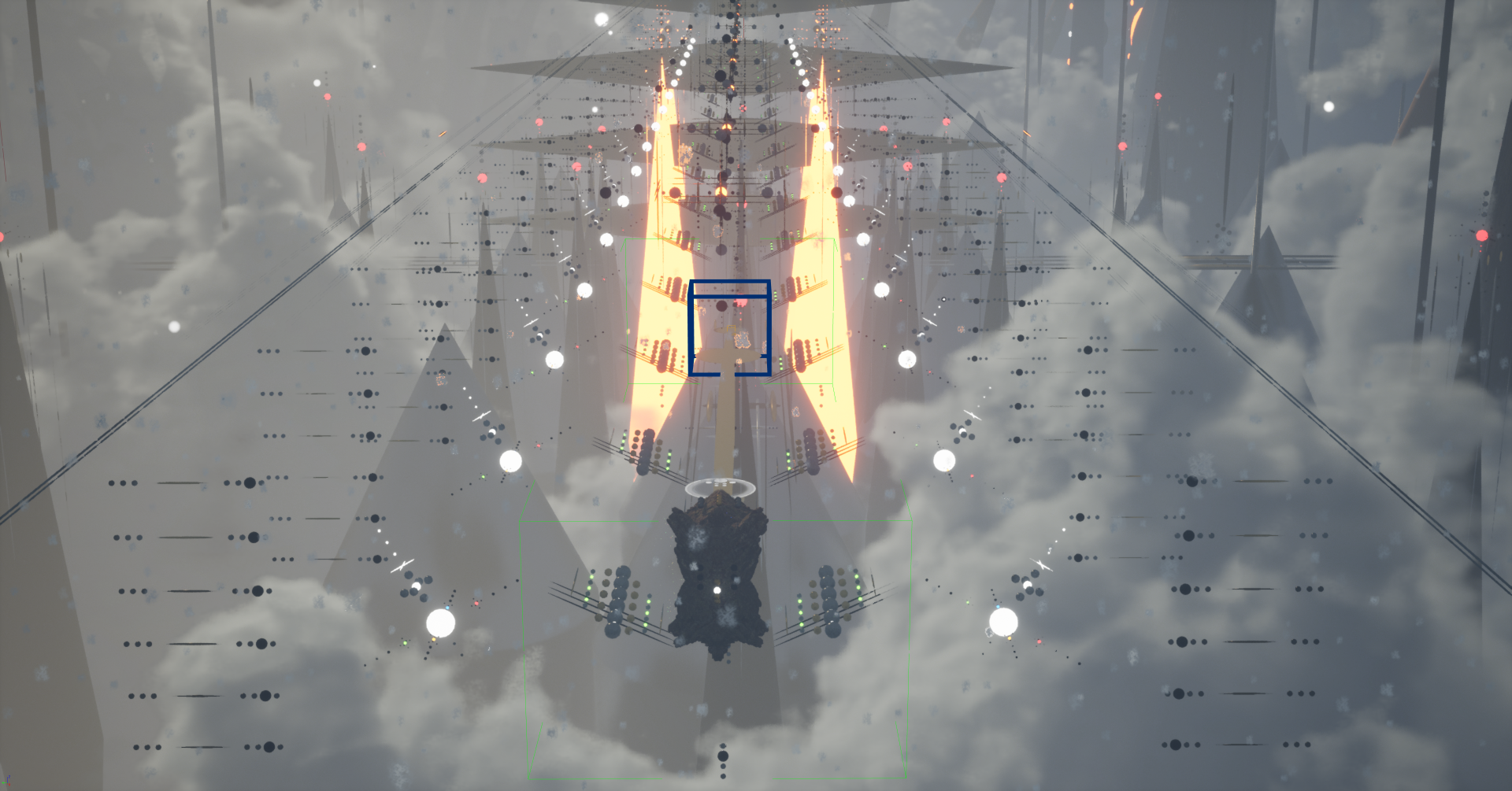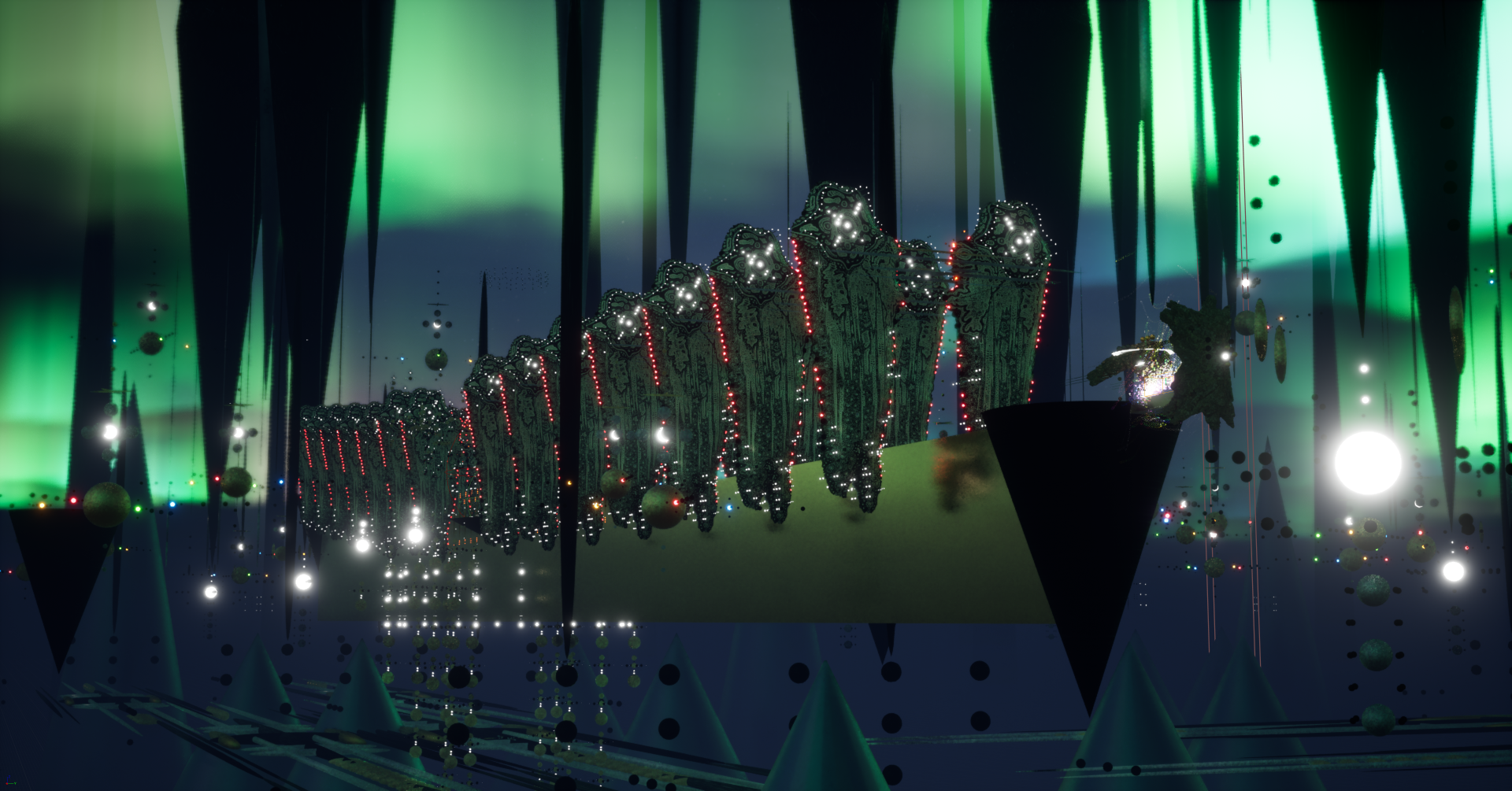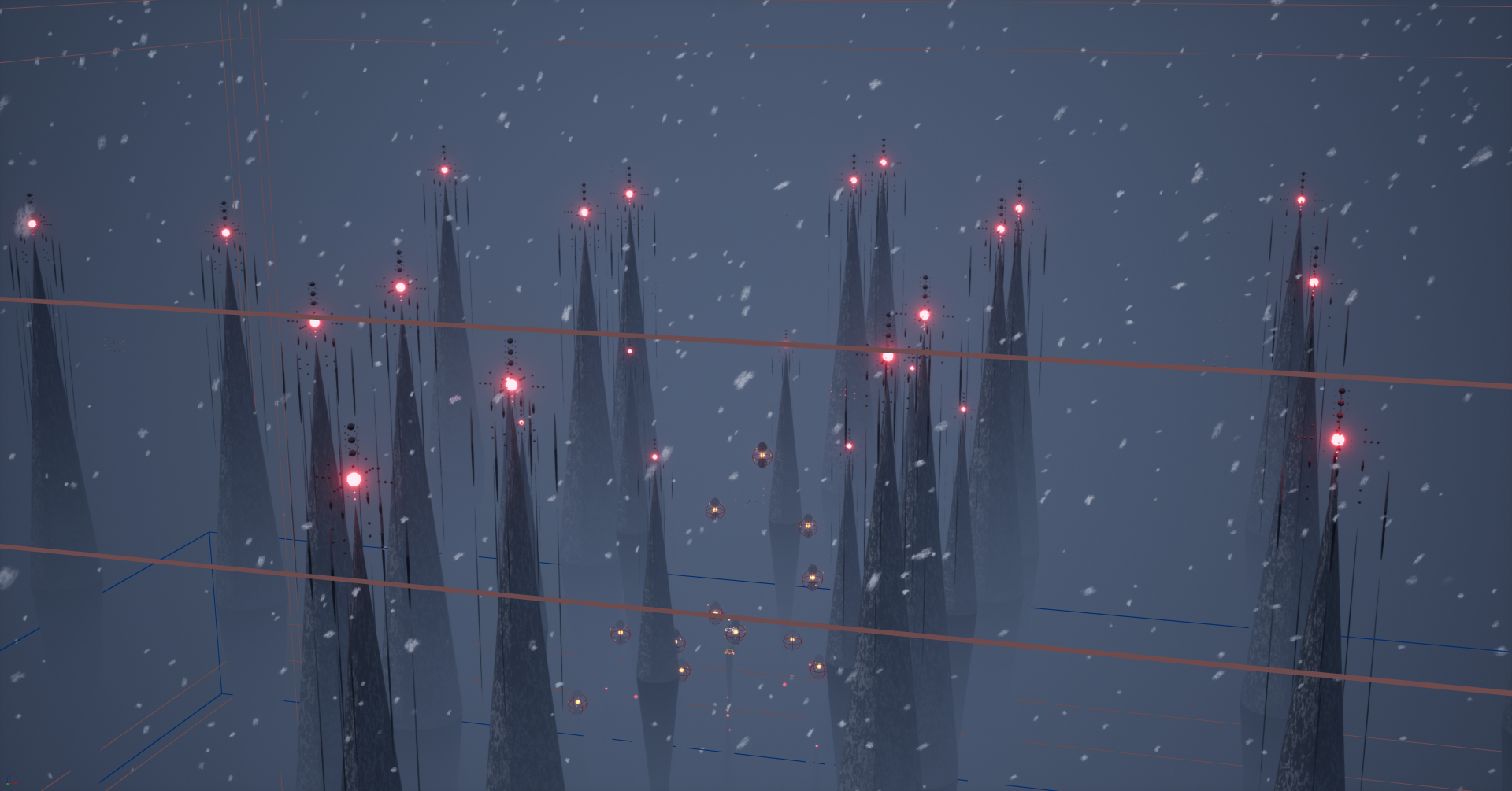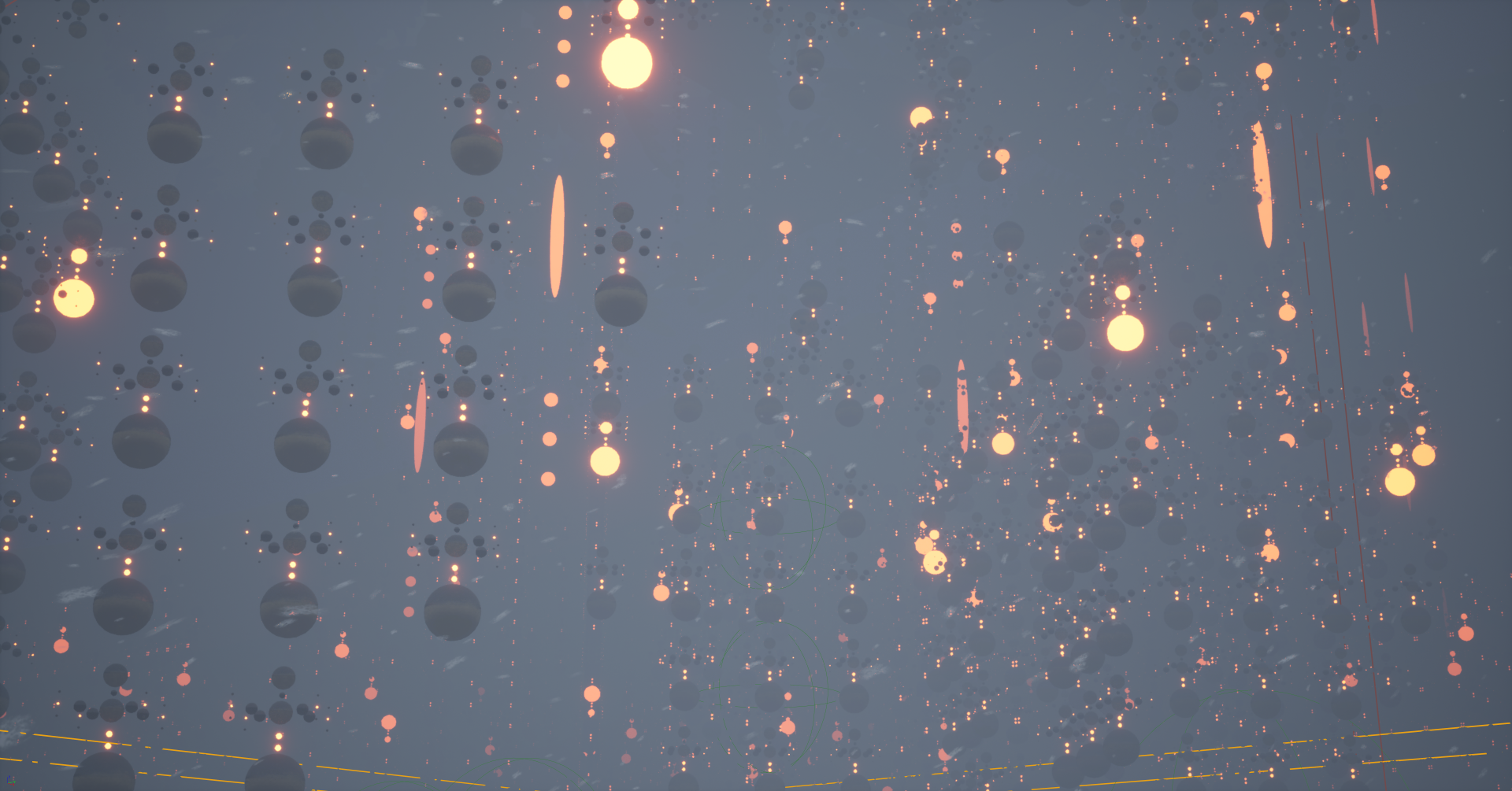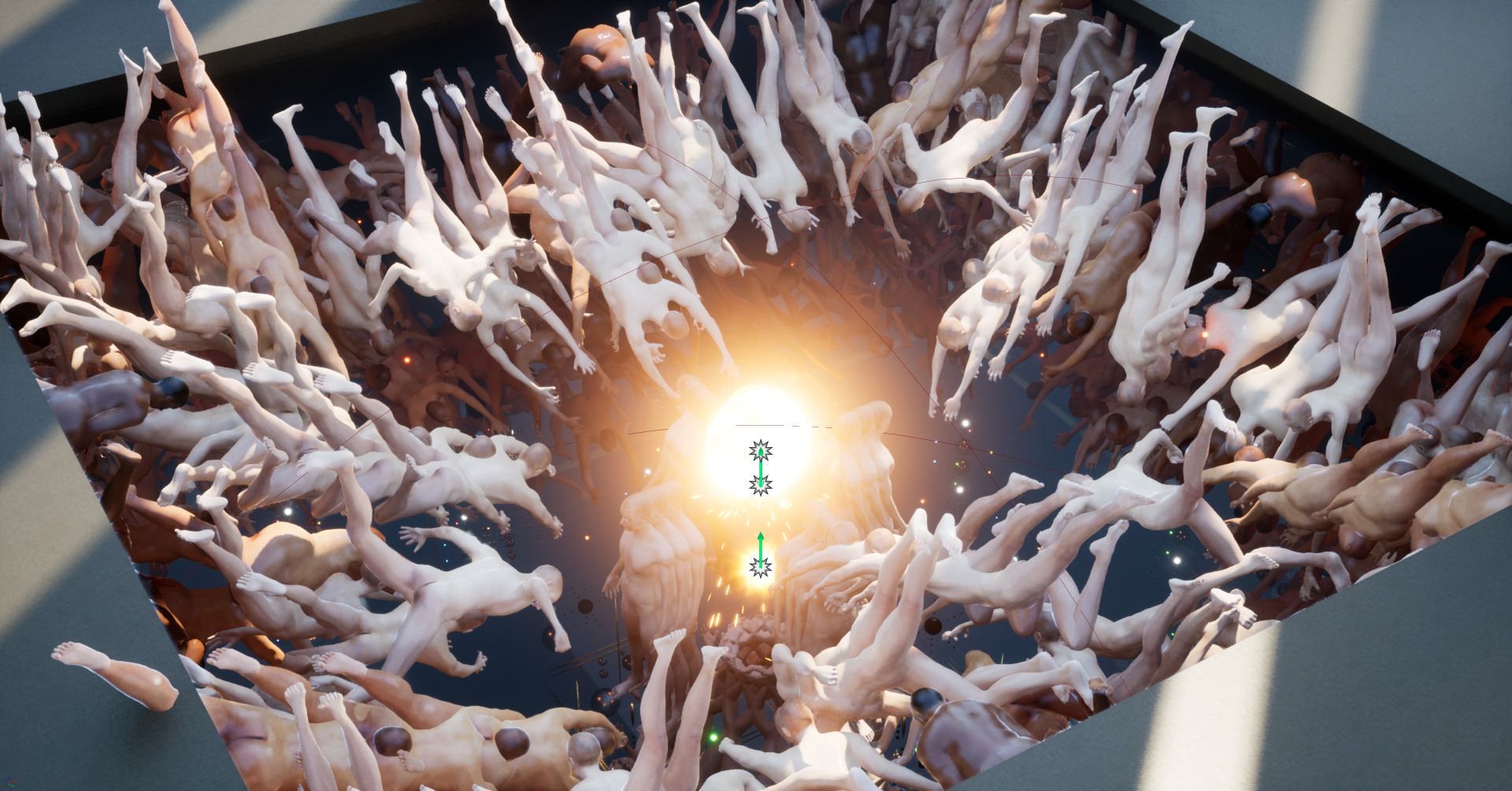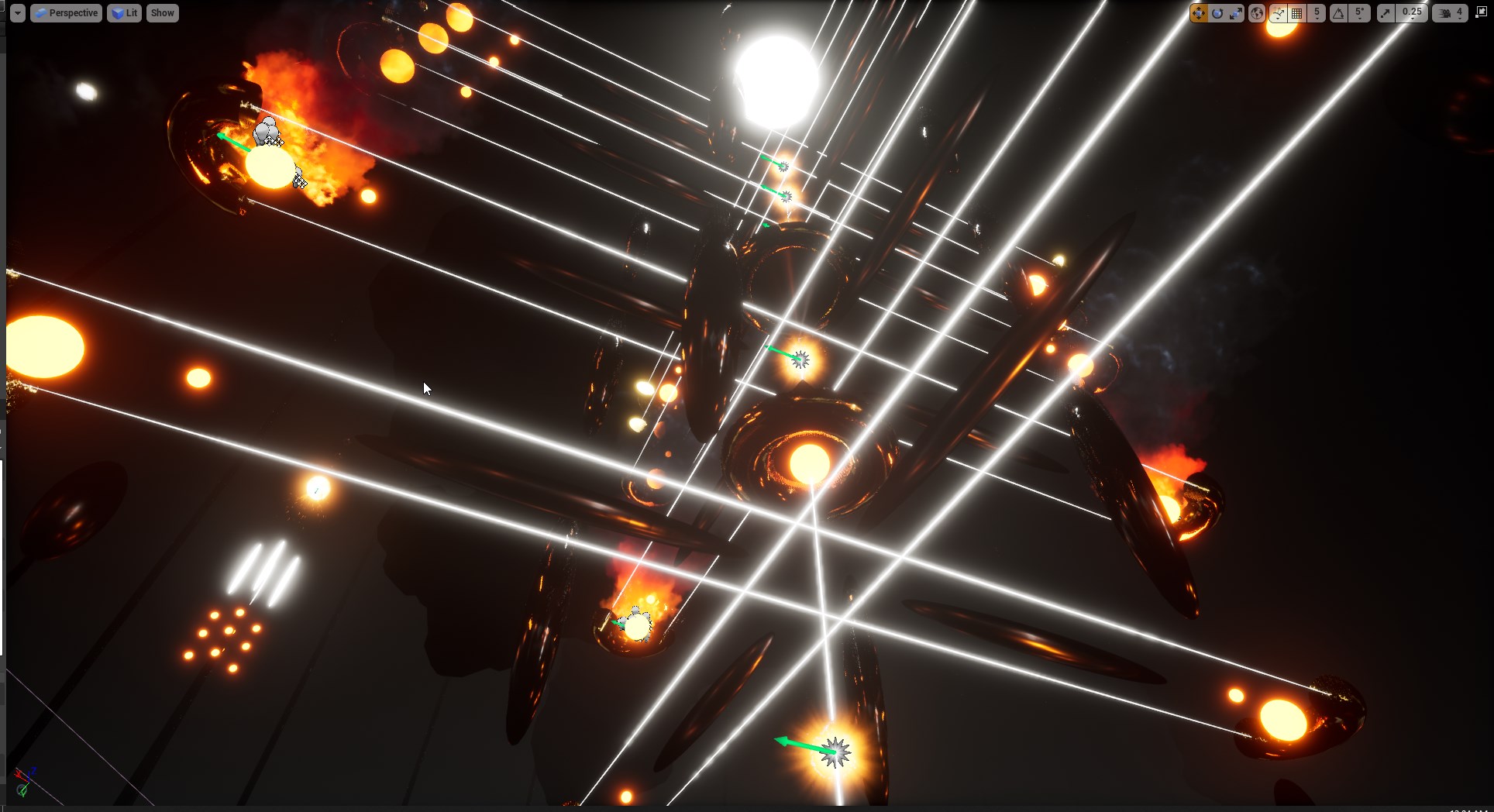Atl-Aequus & the Five Phases, 2022.
Journey into the mythological world rooted by a fivefold conceptual scheme.
Closed-world game series
atl. (abbreviation): Atlas.
Aequus (from the Latin): Equal; Level, even, flat, horizontal; Calm.
#MYTHOLOGY
Chuah Chong Yan’s studio is littered with relics. He brings my attention to a defunct 2014 MacBook and a dated iPhone from his time in university, covered in cryptic drawings made presumably with sharpies and coloured pens on white-out, like the classroom doodles of a hyperactive child’s imagination. These artefacts of his creative identity are placed on display pedestals, prized finds in an archaeology of his digital life.
While Chong Yan is primarily known for his expansive digital works, he begins not with making worlds but with crafting their constituent objects. It is a simple question of scale: objects and stories first, worlds later. A series of sketches on paper, not unlike his MacBook drawings, was what began atl-Aequus. His mark-making is intentionally rough, each amateurish scratch of the pencil belying the chlorine-free paper it is made on. These sketches ultimately culminated in a fiveby-one-metre large map of atl-Aequus’ world, drawn with ink on canvas, its background washed in the blood-red acrylic of a Taoist altar tablecloth. Scale matters. As the adage goes, “The higher the altar, the closer to the gods”.
Since moving back to Malaysia, Chong Yan has been exploring the esoteric Buddhist-Taoist traditions he grew up with. In particular, atl-Aequus draws from the fivefold conceptual scheme of wuxing, a Chinese theory of five phases (Wood, Fire, Earth, Metal, Water) that govern and explain interactions between all phenomena, from politics to medicine. Wuxing is — in Internet parlance — an aesthetic, furnishing atl-Aequus with its Oriental, elemental Sino-futurism. But it is also the governing structure for the way natural elements interact in-game, a universal system upon which everything can be explained and made known. It is not unlike the function of God, or Science, or even the hyperlinked internet: it is the relational fibre that stitches pockets of information together. Perhaps more accurately, it is God and Science made for the era of the hyper-linked internet, a yassified, beauty-filtered myth made maximal.
#WORLDBUILDING
There is no end in atl-Aequus. There is no death, no final stage, no linear time. Instead, there are centres. Each world in this game of exploration is built around a central anchor object, or a series of objects arrayed in a field: a sun-like orb, a columbarium made of bodies, gridded megaliths piercing the sky. The worlds we see are made from the inside out; in other words, these worlds are built, asset-by-asset, brick-by-brick.
Trained as an architect, much of Chong Yan’s work imagines architecture in the digital realm, asking what role an architect could play in a fully digital future. Ever the provocateur, he is a futurist who thinks in hypotheticals. With the grandeur of a twentieth-century urban planner, he seeks to envision possibilities of the human in the era of the metaverse. “What if you could design not just an environment”, he says, “but design a Meta-God”? Chong Yan sees the role of the architect as a “techno-paganist” or a “digital shaman” who understands the blueprint of the world, where an architect’s understanding of structure is abstracted from the scale of a building to the scale of a world. Where architects once had plan drawings or the knowledge of structural engineering, in atl-Aequus they have wuxing. “Shamans make gods, and gods make a universe”, he tells me.
Built on Unreal Engine 5, Chong Yan makes an unrealistic world look as realistic as possible. Gone are triangles of geometry; detail is made at the level of the pixel. Light is thus a recurring obsession, both in-game and in his thinking about the game. In addition to walking around the world, players can throw balls of light or hold up a torch to brighten the world around them. Force feedback jolts through the console when a player throws a fireball. The fireball blazes a path in nocturnal worlds, each ray it emits traced onto an existing cache of surfaces to simulate firelight. The engine whirs.
Chong Yan shows me the back end for atl-Aequus. The logic of the game reveals itself as a tightly knitted set of parameters. Simply put, it is a case of “If this, then that” — taken to the nth degree. My guide through the flow of the machine, Chong Yan takes me through a pathway for sound activation. The background music of monks chanting, he says, was his own voice, recorded on his iPhone in the bathroom of his apartment. I imagine him standing in the shower, a towel wrapped around his head with a glowing screen illuminating his chanting voice.
#MANIFESTO
This is the fourth world of Chong Yan’s creation. In 27 Years of Lazarian Delights (2020), he conceived of an abstract explorer in a foreign land. But now, he is reinventing himself not as a traveller but as a creator. Unlike FAC3D (2021), which questioned the role of artificial intelligence in authorship, here, the maker reigns supreme. atl-Aequus is ultimately a human-ist pursuit, in the sense that the human is the ultimate arbiter of truth. Worlds are created and destroyed as easily as we might perceive them.
From the Lubanjing to Le Corbusier, architectural theory has historically been written in manifestos. With atl-Aequus, we see its latest iteration. Chong Yan frames this project as an interface, bringing closer the socio-political world and his digital one. In the era of the mythologised architect, Chong Yan envisions utopia, with his meta-gods having the “digital intelligence to distribute power”. “Aequus” is Latin for equality, but it can also mean flat, even, horizontal. It is an all-consuming totality. This world is a closed-loop system with its own laws of physics, time, politics, space. At the end of worldbuilding, we find alt-Aequus.
Chong Yan showed me the game just after lunch. By the time we were done at mid-afternoon, it was raining. The sky seemed to me a strange facsimile of the game-world. I spent the rest of the day blearily blinking away the high-definition images behind my eyes. I’m not sure whether it was a dream, a nightmare, a vision of what is to come, or all the above.
Text by Lim Sheau Yun
BLUEPRINTS
“Since returning to Malaysia, I’ve been learning about my Chinese-Malaysian heritage through the esoteric rituals practised by my parents and their friends within the local Buddhist community. This rediscovery has led me to contemplate aspects of identity and the various methodologies that work to propagate mythologies . Atl-Aequus and the Five Phases︎is a collection of found evidence - { digital artefacts, objects, drawings, maps, and other ephemera}. of a voyage. At the center of it all sits a video game , where audience members can take turns exploring the mythological world , interacting with surreal landscapes and future artefacts/digital installations as if they are time travellers teleporting to a mythical perspective of Earth. In this rendition of Earth, I experiment with the temporal dimension by envisioning a society abundant with future mythologies and prospective artefacts without the constraints of location-specific (dependent) culture, ethnicity and spiritual identity that we are familiar with today. The focus of the work is on myth-making by reconfiguring symbols and allegories of the past in order to create its future lineage. I acknowledge that future utopias cannot exist in a vacuum as my identity and subjective experiences as an artist shape the overall rendering of this world. Therefore, my family’s roots in Buddhism, particularly the elemental practice of the five phases (Wood, Fire, Earth, Metal, and Water ), as well as the framework of collective memories, traditions, and time may come to light in this exploration.” 🌙





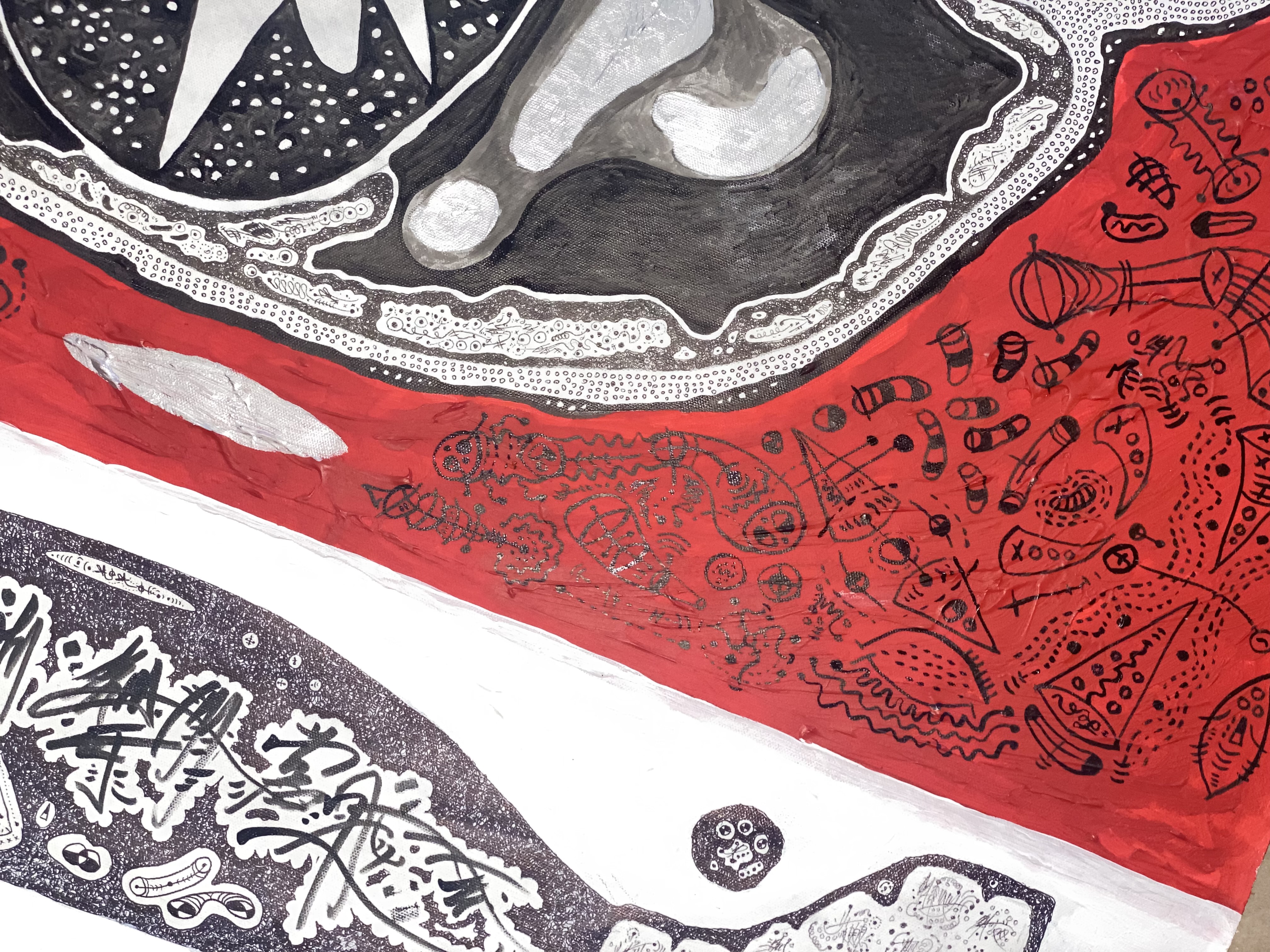





META-DATA.”
Lead/Ink on Digital Waste
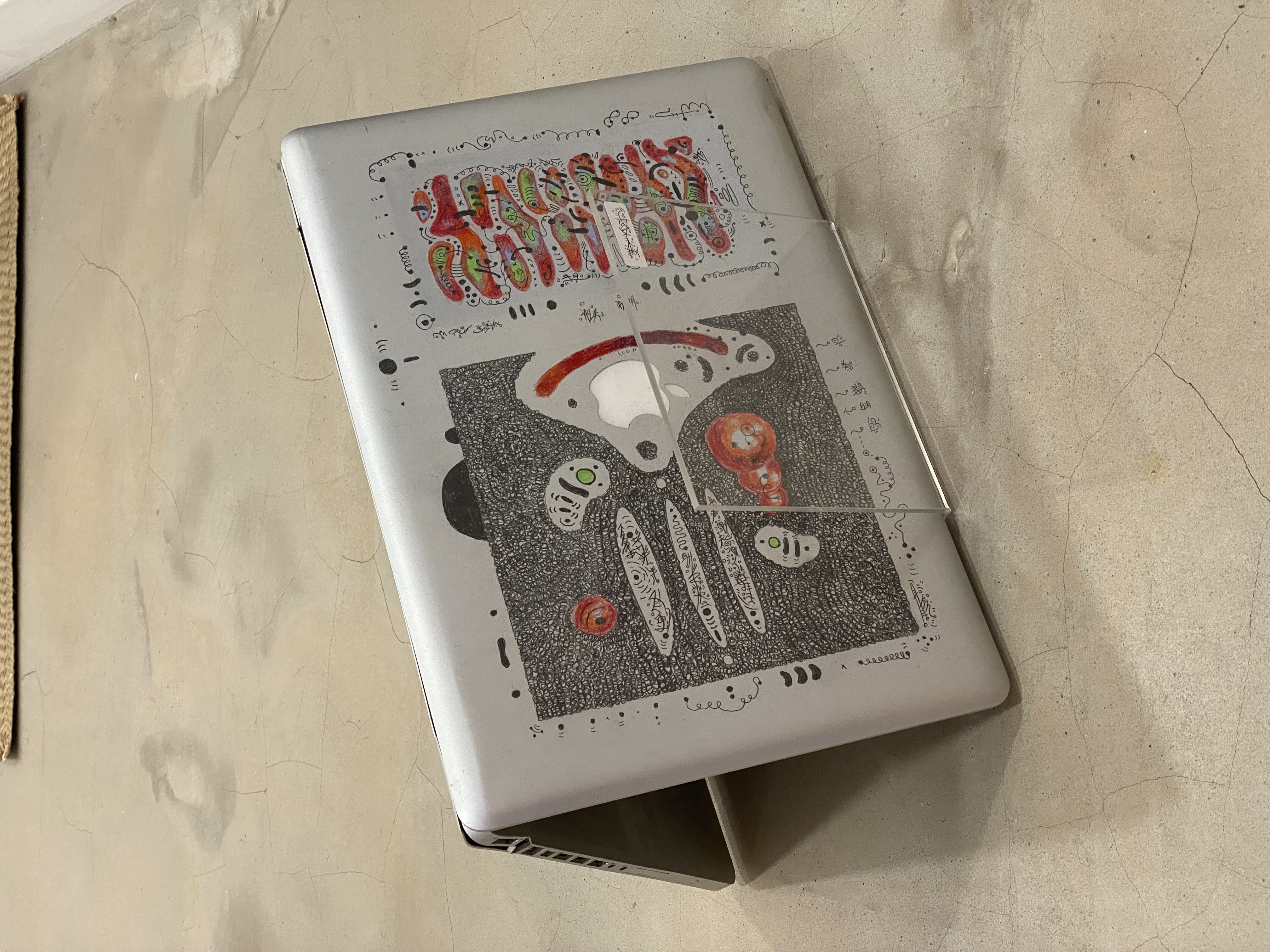
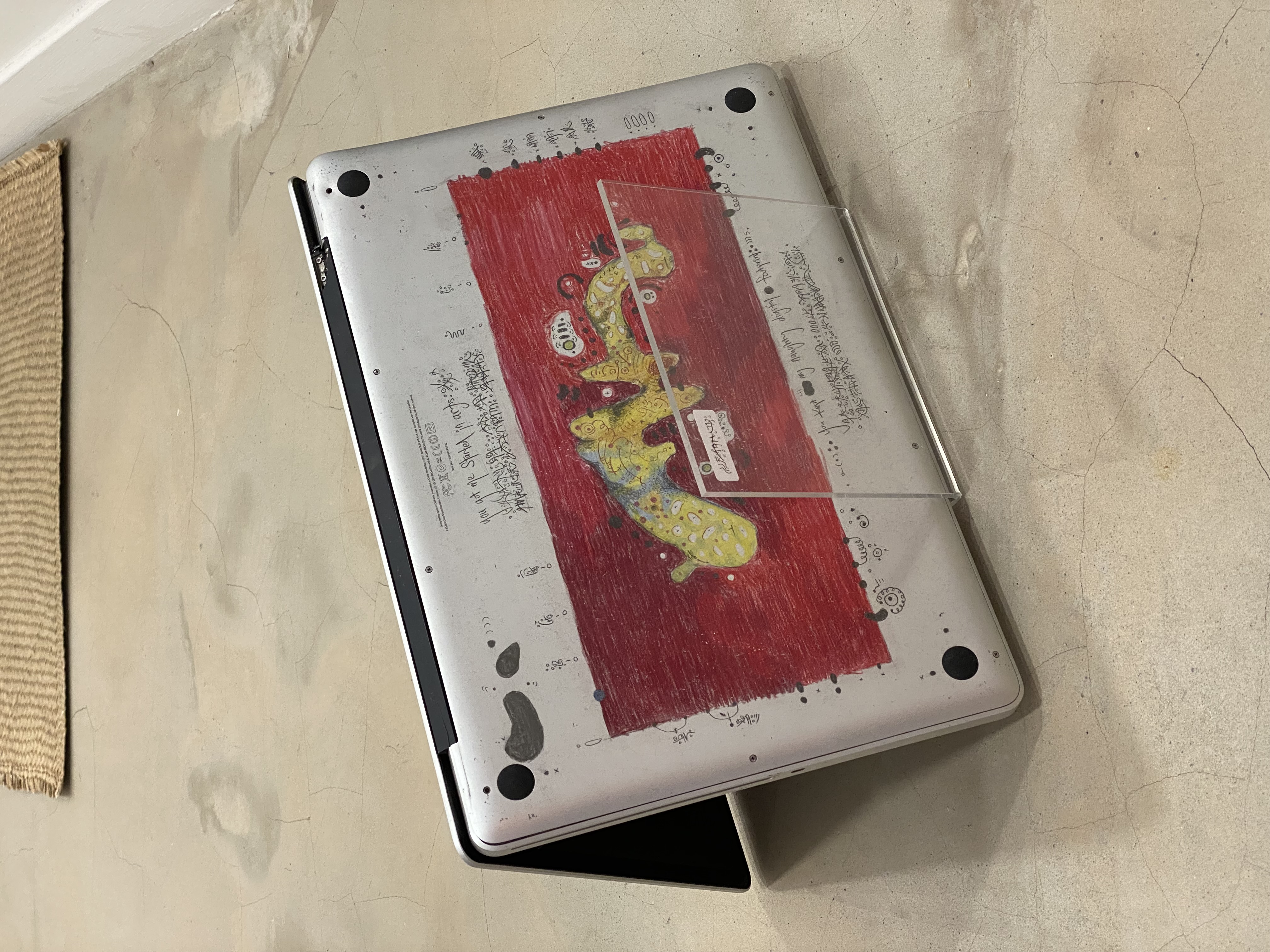
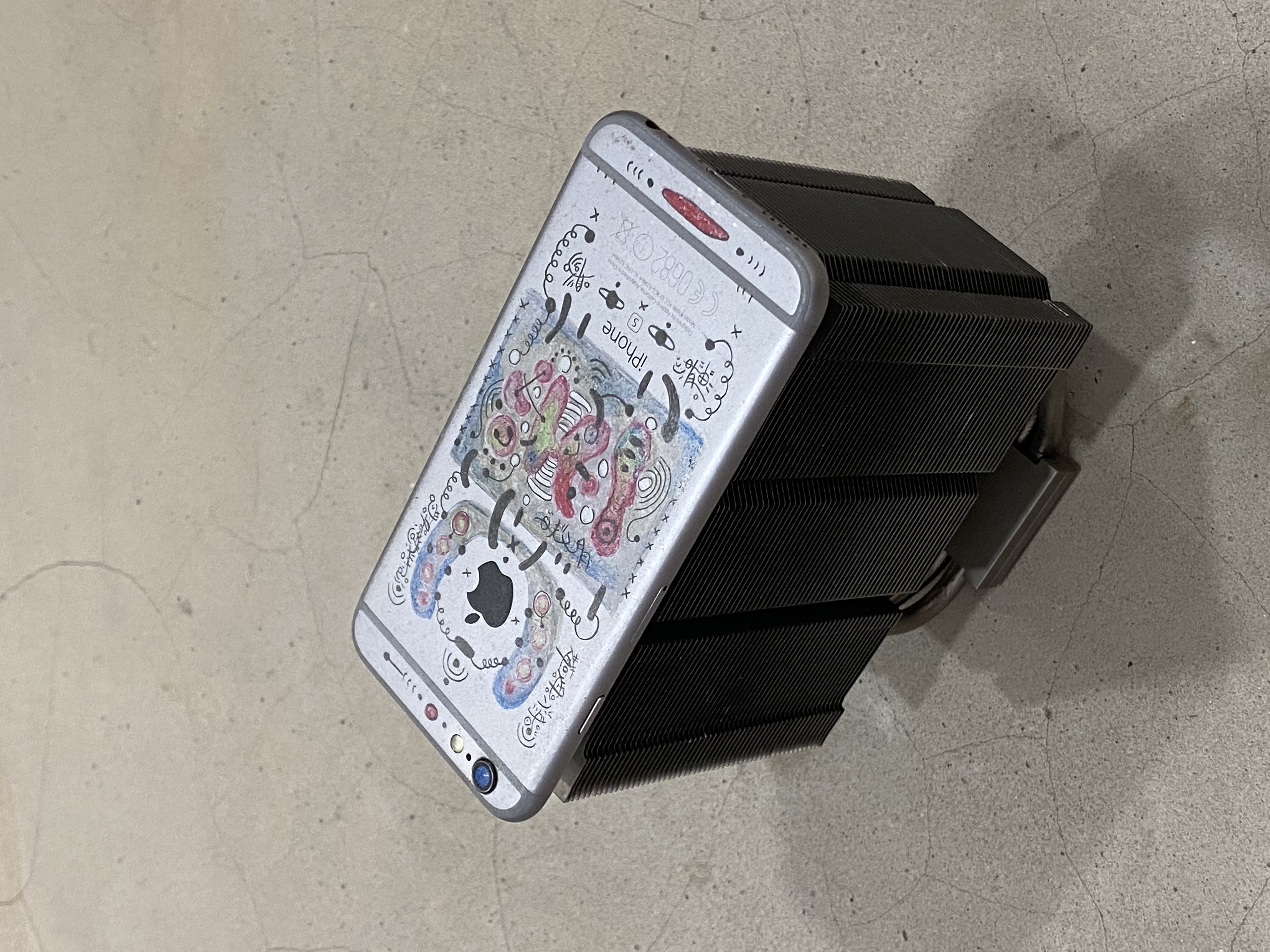
Exhibition




